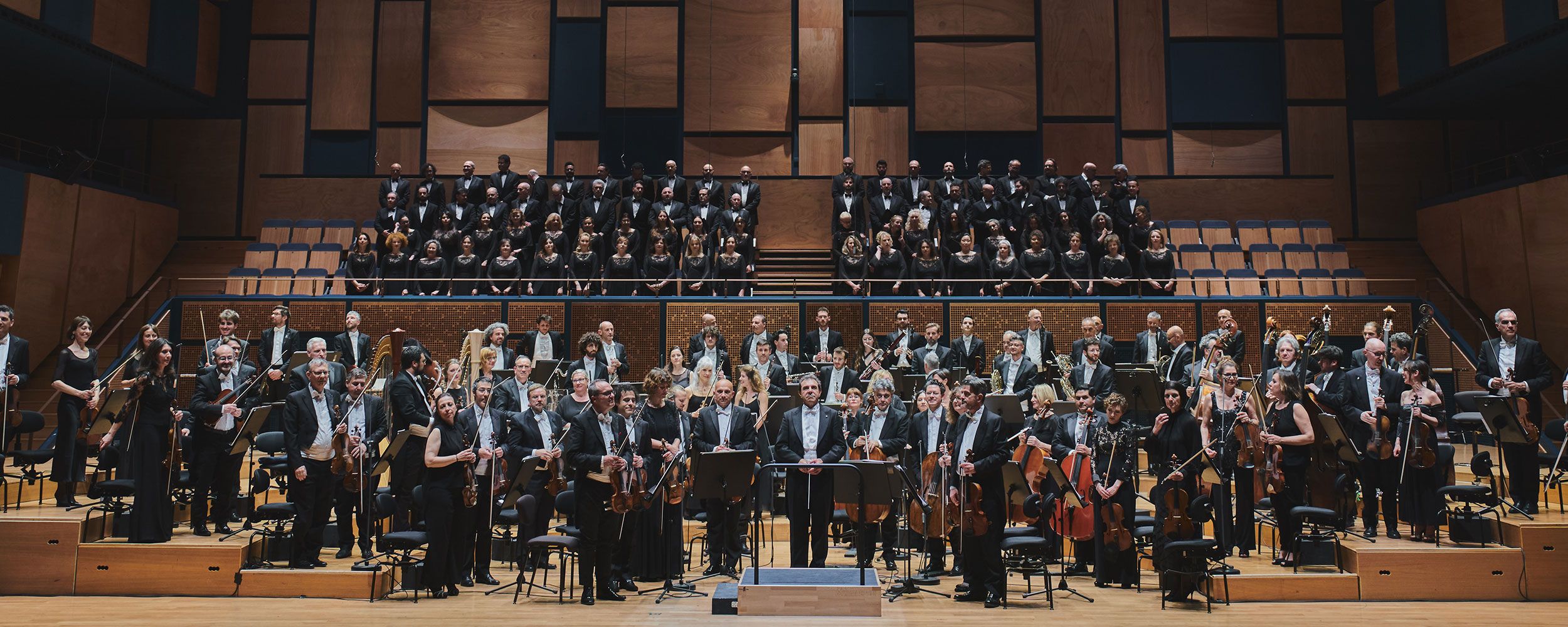5 May 2024, Great Hall of the Theatre: symphonic choral concert conducted by Daniele Gatti

Sunday 5 May 2024 at 8 pm maestro Daniele Gatti on the podium of the Sala Grande for his second symphony concert as part of the 86th Festival del Maggio Musicale Fiorentino.
On the bill, music by Goffredo Petrassi and Dmitrij Šostakovič.
The concert will be broadcast deferred on Rai Radio 3
Florence, May 3rd, 2024 – A few weeks after the warm success of the first symphonic concert the 86th edition of the Festival del Maggio Musicale Fiorentino, the main conductor Daniele Gatti returns to lead the Maggio Orchestra and Choir for a another choral symphonic event, scheduled for May 5th at 8pm in the Great Hall of the Theatre.
Opening is Goffredo Petrassi's Magnificat, a composition for light soprano, mixed choir and orchestra which also features Eleonora Bellocci, who returns to the stage of Maggio after the performances of the acclaim med Ritorno di Ulisse in patria in July 2021, winner of the “Abbiati Prize” as best show of the year. A piece with a strong sacred imprint, in line with the program of the concert on April 13th - which included Alexander Zemlinsky's Psalm 13 - and with what will be Maestro Gatti's last concert commitment as part of the 86th Maggio Festival, on June 7th in Sala Mehta, which features Psalm IX, also by Goffredo Petrassi.
The master of the Coro del Maggio is Lorenzo Fratini.
Closing the concert the Symphony no. 10 in E minor op. 93 by Dmitrij Šostakovič: composed between July and October 1953 - approximately 8 years after the previous one - it was performed for the first time in December of the same year, immediately obtaining a wide response but ending up under eye of the Union of Soviet Composers, which criticized the tone of the score, deemed too pessimistic compared to the celebratory and positive characteristics that the regime partly tried to impose to the music.
Before each performance, presentations of the shows are offered to the public: the guides are held in the Foyer of the Zubin Mehta Hall or in the Gallery Foyer of the Great Hall approximately 45 minutes before the start of each performance.
The program:
GOFFREDO PETRASSI
Magnificat for soprano, mixed choir and orchestra
Born on the outskirts of Rome in 1904, Goffredo Petrassi took his first steps in the musical world among the ranks of the pueri cantores of the Schola Cantorum of the Church of San Salvatore in Lauro. At the Conservatory of Santa Cecilia, where he graduated in organ and composition, he tried his hand at the bold polyphonies of Josquin Desprez and Palestrina but at the same time was struck by the modernism of Igor Stravinsky. Thus, like other colleagues of his generation, he began his artistic journey under the pressure of the neoclassical current, which led him to rework musical forms of the past in a new and eclectic way. The Magnificat for light soprano, choir and orchestra was created between 1939 and 1940 and performed for the first time on 4 May 1941 at the Teatro Adriano in Rome under the direction of Bernardino Molinari. Like Psalm IX, which had consecrated the name of Petrassi only a few years earlier, the Magnificat is also an important choral passage based on a sacred text, the song of praise and gratitude to God which according to the Gospel of Luke was sung for the first time by the Virgin Mary after the Annunciation. In the Magnificat the composer's attention is focused on rendering the words and images contained in the text in an almost madrigalistic way, creating a sound fresco where imposing choral perorations alternate with episodes of calm lyricism. Particularly evocative is the role of the Virgin who hovers over the various choral interventions with an agile and crystalline voice. At the end of the work Petrassi constructs a grandiose fugue for the intonation of the Gloria which, contrary to expectations, does not end in a triumphal way but ends pianissimo in the final Amen.
DMITRIJ ŠOSTAKOVIČ
Symphony no. 10 in E minor op. 93
After Stalin's death on March 5, 1953, Dmitrij Šostakovič began composing his tenth symphony. The work on the new score occupied him from July to October and on 17 December the Symphony no. 10 in E minor op. 93 debuted in Leningrad directed by Yevgeny Mravinsky. A dark and introspective work, the Symphony no. 10 represents a denunciation of Stalin's personality, which had such a tragic impact on the lives of Soviet artists. In fact, the dictator's presence hovers menacingly over the entire score, especially in the second movement which, as the author specified, was conceived as a sound portrait of the dictator. Divided into four canonical movements, the Symphony presents a chiaroscuro writing rich in allusions. In the first and very long movement in Moderato tempo, a desolate theme similar to a threnody, initially entrusted to cellos and double basses, moves creeping in the orchestra like a fixed idea. Then follows a very short Allegro with astonishing expressive power. The portrait of the dictator is characterized by a violent and brutal marching rhythm, by clashing blocks of sound and by the use of the tritone, the diabolical interval par excellence in the history of music. The third movement (Allegretto) takes up, transformed into the waltz rhythm, the undulating theme of the first movement to which the author contrasts a motto built on the notes D-E flat-C-B, the cryptogram of his name according to the Anglo-Saxon notation already used in other works. In the finale, an Allegro introduced by an Andante, we find the aggressive pace of the second movement. The thematic phrase of the dictator is contrasted with the motto of the composer's name which innervates the musical discourse until the last bars in which Šostakóvič triumphantly affirms his newfound artistic freedom.



